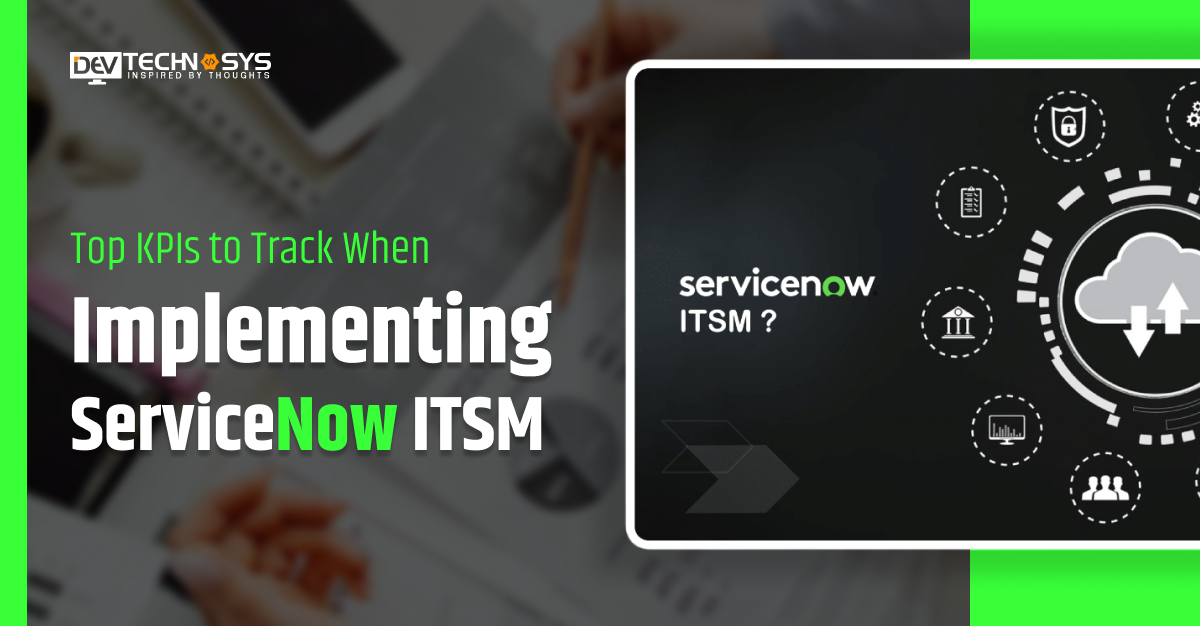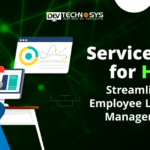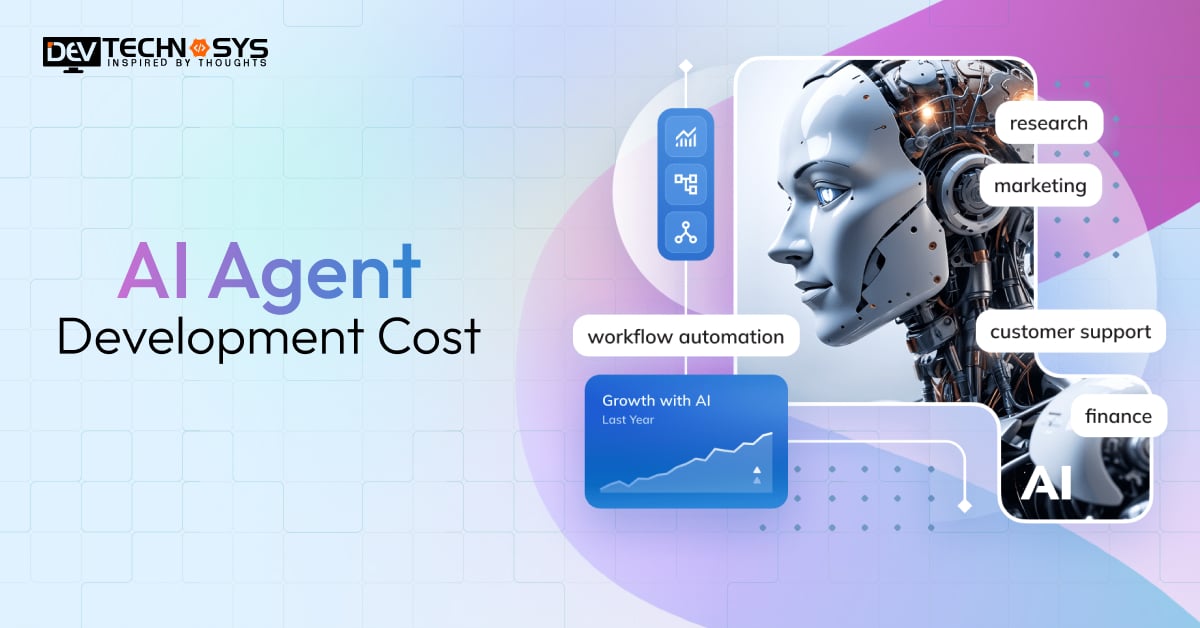Implementing ServiceNow ITSM can revolutionize the way your organization manages IT services. But how do you know if your investment is paying off? That’s where Key Performance Indicators (KPIs) come in.
These essential KPIs to track when implementing ServiceNow ITSM and measure the success of your ITSM implementation KPIs, ensuring it aligns with your business goals. According to a recent study, companies that track key performance indicators (KPIs) are 2.5 times more likely to achieve their IT service management objectives.
Whether it’s improving response times, reducing downtime, or increasing customer satisfaction, the right KPIs will give you the insights needed to optimize your IT services.
In this blog, we’ll dive into the top KPIs you should monitor when rolling out ServiceNow ITSM KPIs, helping you stay on track and drive real, measurable results. Let’s explore how you can transform your service management approach with data-driven decisions!
So, let’s begin!
Why do KPIs Matter in ITSM?
When you’re using ServiceNow to manage your IT services, it’s easy to get caught up in features, dashboards, and tickets. But if you don’t track the correct numbers, you won’t know if your efforts are making a difference. That’s where KPIs come in. They’re like the vital signs of your IT operations, helping you see what’s working and what needs fixing.
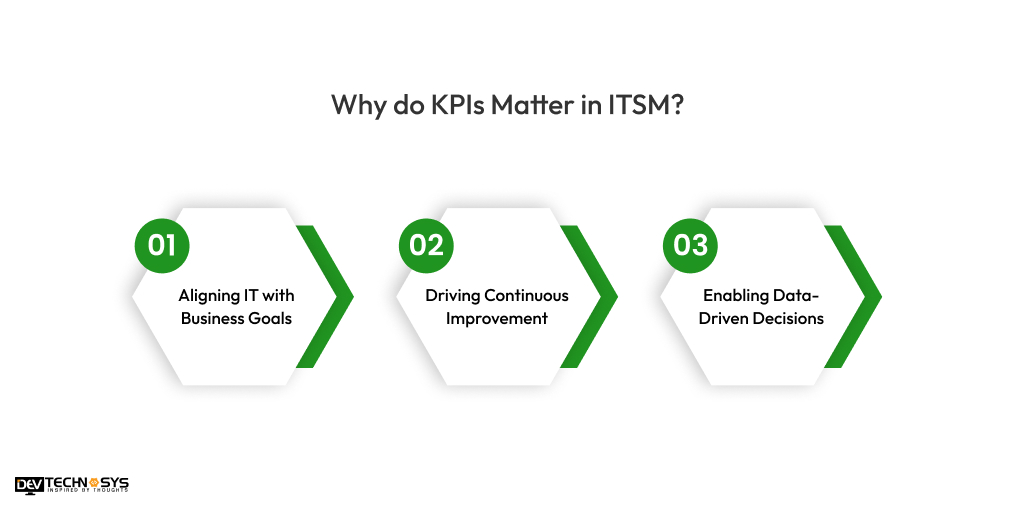
1. Aligning IT with Business Goals
The Servicenow consulting services provider helps the whole company, not just their departments. It’s up to IT to deliver real value, such as ensuring systems function smoothly, promptly resolving user issues, or implementing changes without disrupting operations. KPIs let you see how well IT is doing that.
One business goal might be to make customers happier. Keeping track of how long it takes to resolve incidents or complete service requests can help you determine whether IT is contributing to or hindering that goal. With the right KPIs, everyone stays focused on what the business needs.
2. Driving Continuous Improvement
It’s okay that sometimes processes don’t work perfectly. It’s essential to be able to identify where things are going wrong and make corrections over time. That’s what KPIs help you do. Like feedback loops, they show you patterns and trends that you can use to learn.
You may have noticed that the number of times your changes fail has been going up. That means you need to look at your current IT service management method and make it better. You would be guessing instead of getting better without KPIs.
3. Enabling Data-Driven Decisions
It’s easy to make choices in IT based on gut feelings or anecdotal evidence. However, those approaches don’t always take into account the broader perspective. KPIs give you facts to help you decide what to do. If someone in charge asks, “How are we doing?” or “Why do we need more resources?”
You can give them hard facts instead of a general answer. KPIs help you be taken more seriously and make better choices, like moving your Servicenow support services team around, buying technology, or going over your service-level agreements again.
6 Categories of ServiceNow ITSM KPIs
Key Performance Indicators (KPIs) must be tracked when putting IT Service Management (ITSM) into ServiceNow. But not every KPI measures the same thing. KPIs are usually split up into groups based on IT processes so that you can get a full picture of ITSM success. Here are the most critical types of ServiceNow ITSM KPIs and their significance.
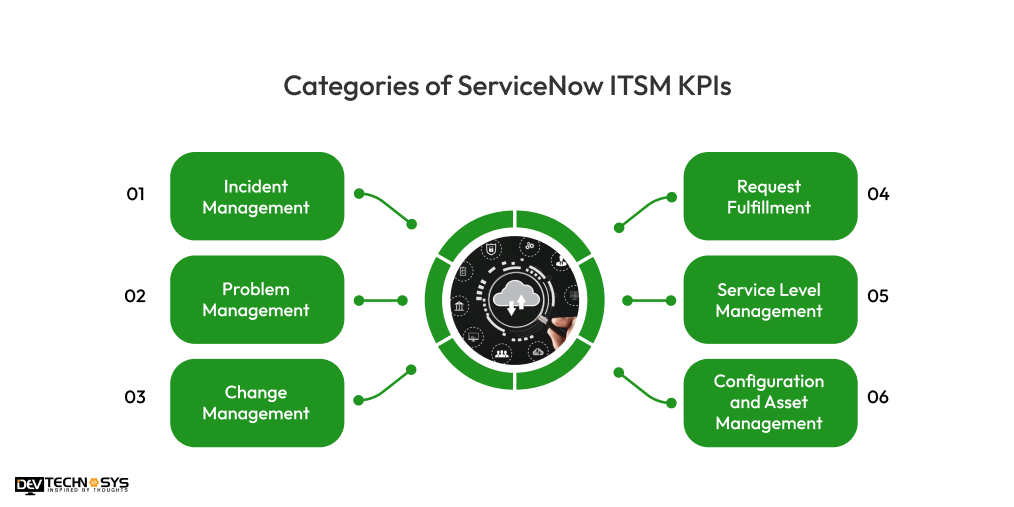
1. Incident Management
When something goes wrong, like a system going down, an app crashing, or a login not working, Incident management KPIs, ServiceNow is in charge of fixing it. The goal is to fix problems as quickly as possible so that people don’t have to deal with too much trouble.
These KPIs are used to track when implementing ServiceNow ITSM, how well events are handled, and how often they happen.
2. Problem Management
In contrast to incidents, which are about solving problems right away, problem management is about identifying and getting rid of the causes of problems that keep happening.
If, say, a company’s email system crashes every Monday morning, problem management will look into why this keeps happening. Here, KPIs show how well Servicenow managed services teams are finding problems, analyzing them, and fixing them for good.
3. Change Management
Change management makes sure that changes, updates, or upgrades to IT systems go smoothly and don’t cause problems that were not planned. IT teams need to keep risks as low as possible when they make big changes to systems or add new software.
This group of ServiceNow ITSM KPIs helps keep track of how often changes fail, how often they work, and how quickly they are put into place.
4. Request Fulfillment
This group is for handling common service requests, like changing a password, installing software, or asking to be let in. The main goal is to provide these services quickly and effectively.
In request completion, KPIs track how quickly requests are handled, how well services are delivered, and how happy users are.
5. Service Level Management
Service Level Agreements (SLAs) spell out how IT services should work, such as how long it should take to respond to help tickets or how long an application should be up and running.
Service level management KPIs keep an eye on how well the Servicenow implementation services team keeps their promises and gets services to customers when they say they will.
6. Configuration and Asset Management
This section is all about handling IT assets like servers, software, hardware, and more, and making sure that records in the Configuration Management Database (CMDB) are correct.
Bad asset management can lose money, put your security at risk, and cause problems with compliance. Here, KPIs keep track of how accurate the records of assets are, how well assets are used, and how often configuration mistakes happen.
5 Top KPIs for Incident Management
When you’re using ServiceNow for IT Service Management (ITSM), one of the most important areas to track is Incident Management. This is all about handling unexpected issues or service disruptions quickly and efficiently. The right Key performance indicators for ITSM help you in measuring ITSM success in ServiceNow. Here are the top KPIs to focus on:
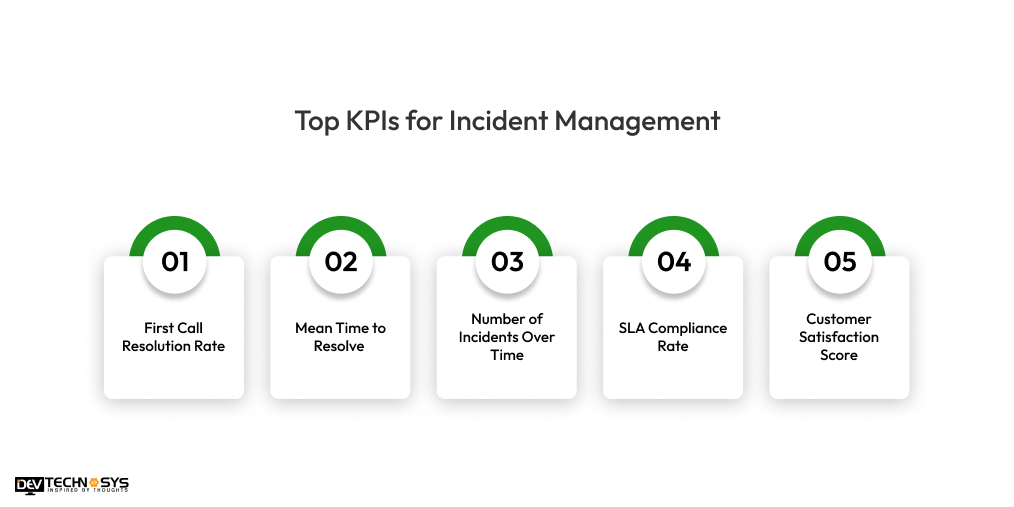
1. First Call Resolution Rate
You can find out how many problems are fixed on the first contact with the person by looking at this. If the number is high, it means that your team is fixing problems quickly and doesn’t need to be contacted again and again.
2. Mean Time to Resolve
This is how long it usually takes to fix a problem. Your team can fix problems faster when the MTTR is low, which makes users happy.
3. Number of Incidents Over Time
Trends can be seen by keeping Track ITSM performance ServiceNow, of how many events happen each week or month. It’s possible that a quick rise is a sign of a bigger problem or that a recent change has caused new problems.
4. SLA Compliance Rate
Service Level Agreements (SLAs) set goals for how long it should take to respond and solve problems. These ServiceNow ITSM KPIs tell you how often your Servicenow migration services team meets those goals. If you fall behind, it could hurt your image with clients or users.
5. Customer Satisfaction Score
Users may be asked to rate their experience after an issue has been fixed. This number shows how happy people are with the help they got, which is an important way to look at service quality from the user’s point of view.
5 Key KPIs for Problem Management
Problem Management in ITSM (IT Service Management) focuses on identifying and fixing the root causes of recurring incidents. The goal isn’t just to solve individual issues, but to prevent them from happening again. To know if your Problem Management process is working well in ServiceNow, it’s important to track the right KPIs.
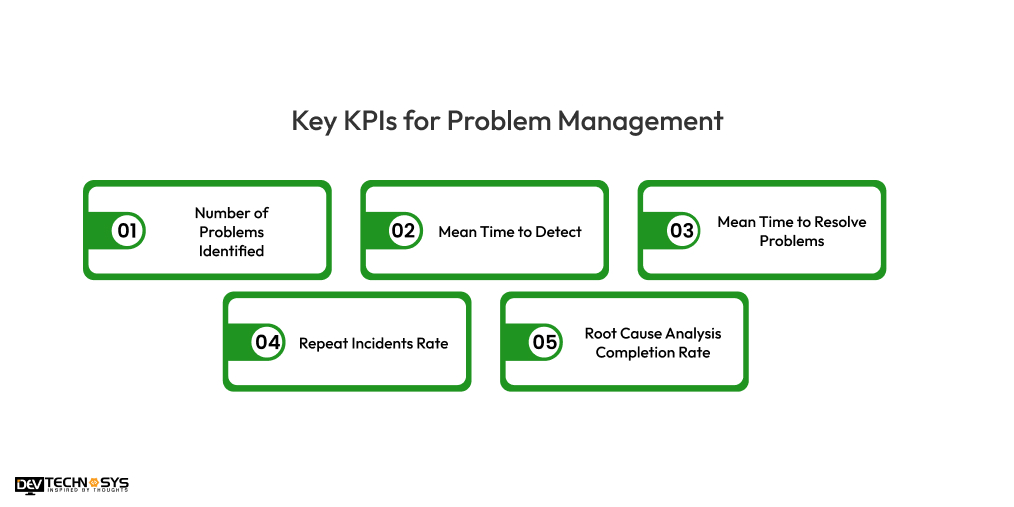
1. Number of Problems Identified
Over a certain amount of time, this shows how many problems your team has found. You might be better at finding problems early if the number keeps going up. But it could also mean that systems aren’t stable and need to be fixed.
2. Mean Time to Detect
This checks how long it takes to find a problem after it starts to cause issues. Your team can work faster to fix problems if they find them faster. When MTTD is low, ServiceNow ITSM performance monitoring and alerting ServiceNow ITSM reporting tools work better.
3. Mean Time to Resolve Problems
This shows how long it usually takes to fix a problem after it’s been found. Long settlement times can cause problems to happen over and over, so cutting them down is a key part of making service better.
4. Repeat Incidents Rate
This KPI shows how often the same problem comes up. With a high rate, your team might be changing the signs instead of the cause. If the return rate is low, it means that problems are being fixed for good.
5. Root Cause Analysis Completion Rate
This counts the number of issues for which a root cause analysis (RCA) is carried out. To have a high success rate, your team needs to really understand and fix the problems that are causing them, not just cover them up for now.
5 Crucial KPIs for Change Management
When your organization uses ServiceNow for IT Service Management (ITSM), tracking Change management KPIs in ITSM is essential. These KPIs help you understand how well changes, like software updates or system upgrades, are being planned, tested, and implemented. Here are five important KPIs to keep an eye on:
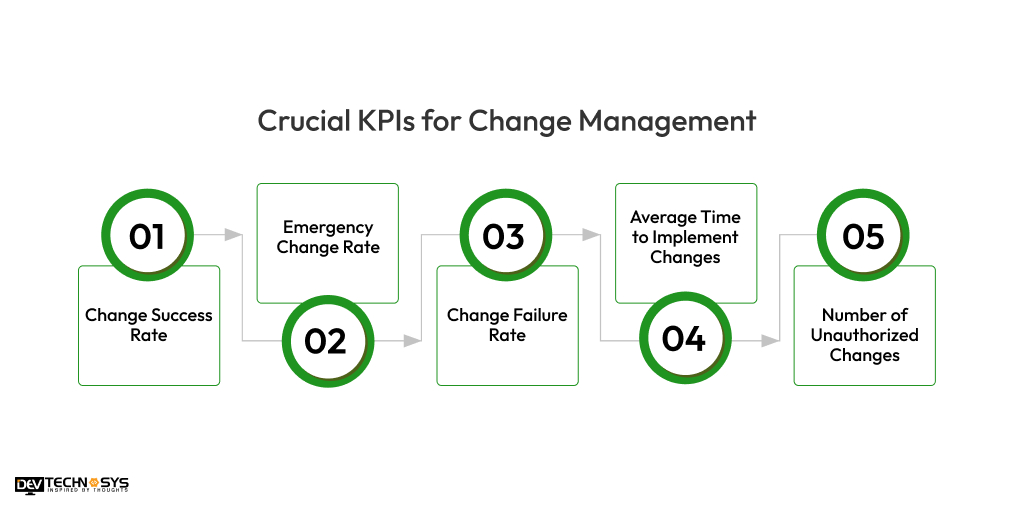
1. Change Success Rate
This counts the number of changes that are made without any problems. If your team has a high success rate, it means they try to plan changes well before putting them into action.
2. Emergency Change Rate
You’re making changes at the last minute a lot of the time in this graph. There will always be emergencies, but if you have a lot of them, it could mean that your change process isn’t effective enough. Most changes should be planned and accepted ahead of time, if possible.
3. Change Failure Rate
This keeps track of how many changes cause problems, mistakes, or the need to go back. It is not a good sign for your process if a lot of things fail. This can cause problems and make people unhappy.
4. Average Time to Implement Changes
This shows how long it takes from when someone asks for a change to when it’s done. Time savings are great, but not if they mean less quality. The goal is to be reliable and efficient.
5. Number of Unauthorized Changes
The right people didn’t agree to these changes. Unauthorized changes can put security at risk or mess up other systems, even if they don’t seem dangerous. Keeping this number low is a sign of good leadership.
4 KPIs for Request Fulfillment
Request Fulfillment refers to handling and delivering services requested by users, like setting up new hardware, granting system access, or providing software updates. To measure the efficiency of this process, you need to track the following KPIs:
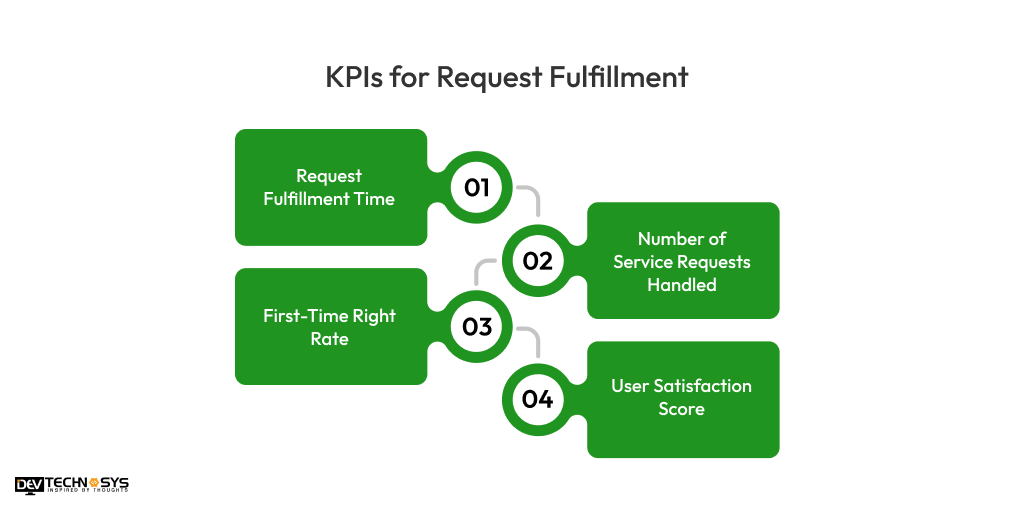
1. Request Fulfillment Time
This KPI keeps track of how long it takes to finish a request from the time it is made until it is whole. We want to cut this time down as much as possible so that people can quickly get what they need. A long wait time could mean that the process isn’t working well.
2. Number of Service Requests Handled
This displays how many requests the team is taking care of during a certain time frame. This helps you figure out how many people are asking for your services and whether your team has enough time to meet those needs. If the number of requests goes up all of a sudden, you might need more resources or to set up some jobs to be done automatically.
3. First-Time Right Rate
This counts the number of requests that are met right the first time. If the rate is low, it means that requests might not be understood or treated correctly, which would require more work. When the First-Time Right Rate is high, people get what they need quickly and correctly.
4. User Satisfaction Score
When a service request is finished, it’s important to find out if the customer is satisfied. Most of the time, polls are used to measure the ServiceNow ITSM KPIs by having users rate their experience. A high satisfaction score means that the service meets the needs of the users, while a low score means that there are things that could be done better.
3 KPIs for Service Level Management
Service Level Management (SLM) is about ensuring that the IT services meet the expectations of both the business and the customers. To monitor the effectiveness of SLM, you need to track specific KPIs for ServiceNow ITSM.
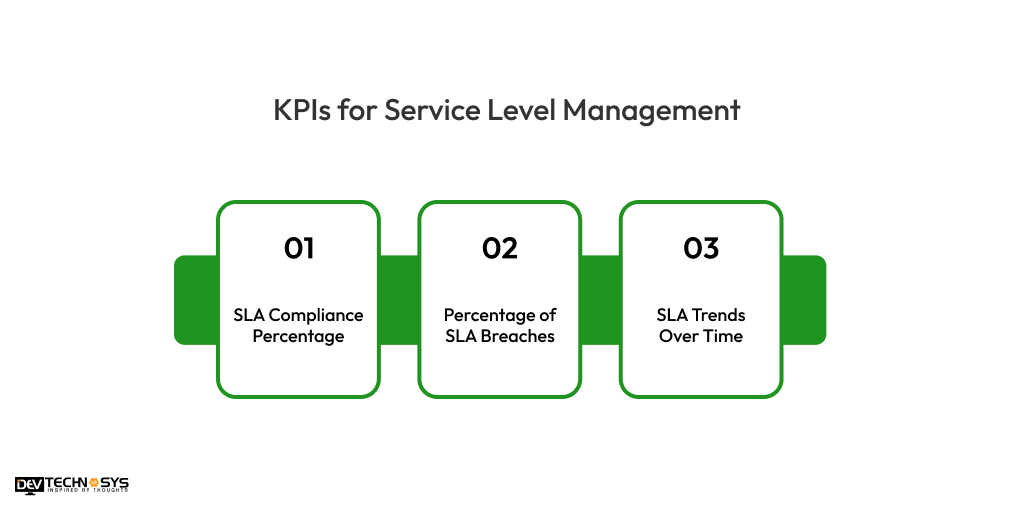
1. SLA Compliance Percentage
This KPI checks how often your services stick to the Service Level Agreements (SLAs) you agreed to. If your SLA compliance rate is high, it means that your team is providing services within the agreed-upon time frames and quality standards. This is a very important measure for figuring out how happy your customers are.
2. Percentage of SLA Breaches
When a service doesn’t meet the expected performance standards, this is called a SLA breach. Keeping an eye on this number helps you spot trends and places where you can do better. If there is a high breach rate, it means that services are not being provided as stated, which could make customers unhappy.
3. SLA Trends Over Time
You can tell if your performance is getting better or worse by keeping an eye on SLA compliance over time. Patterns can be seen, like how breaches often happen at certain times or in certain business areas. This information can help improve processes and make better use of resources so that SLAs are met more easily.
KPIs for Asset and Configuration Management
Effective asset and configuration management is crucial for IT service management, and tracking the right KPIs ensures you have accurate, up-to-date data. Here are some key KPIs to focus on:
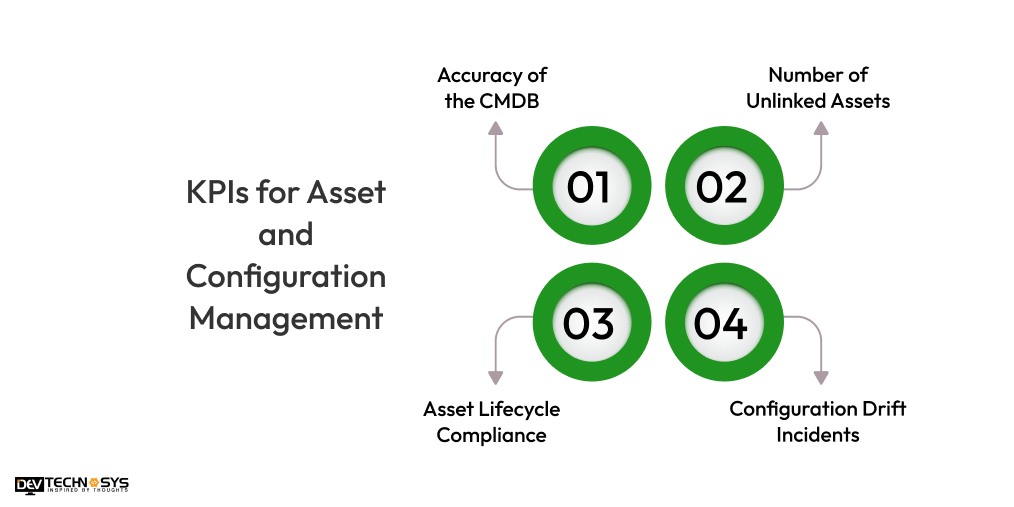
1. Accuracy of the CMDB
This KPI checks how full and correct your CMDB is. A well-kept CMDB helps you keep track of your company’s IT assets and how they connect to each other, giving you the information you need to make decisions. Too many old or wrong entries in your CMDB can make it hard to handle incidents, control changes, and do other things.
2. Number of Unlinked Assets
These ServiceNow ITSM KPIs keep track of assets that aren’t linked correctly in the CMDB. It can be hard to handle your IT infrastructure well if your assets are not linked to each other. The goal is to keep this number as low as possible while making sure that all assets are linked to the right setup items.
3. Asset Lifecycle Compliance
This checks how well your Servicenow development company follows the rules for asset lifecycle management. It covers everything, from buying things to getting rid of them. Keeping track of this ensures that assets are used wisely and effectively, which helps avoid unnecessary costs and risks.
4. Configuration Drift Incidents
When an asset’s setup changes over time without being meant to, this is called configuration drift. This KPI keeps track of how often changes are made to the configuration without proper documentation or approval. This helps you avoid problems with security and speed.
Best Practices for Tracking KPIs in ServiceNow
When it comes to KPIs to track when implementing ServiceNow ITSM, there are a few ServiceNow ITSM best practices to keep in mind for effective monitoring and decision-making.
![]()
1. Dashboards and Reporting Tools
ServiceNow gives you screens that you can change and that show you your KPIs in real time. You can quickly see how things are going in a number with ITSM reporting in ServiceNow.
You can build a custom service catalog in ServiceNow by using widgets to keep track of things like requests, events, changes, and more in the ITSM dashboard ServiceNow. This picture makes it easier to spot problems and trends more quickly.
2. Automating Data Collection
Collecting data by hand takes a lot of time and can lead to mistakes. By automating data collection in ServiceNow, you can be sure that your KPI reports are correct and delivered on time, without any extra work.
ServiceNow has features built in that let data from different processes be pulled together instantly. This keeps everything consistent and cuts down on human error.
3. Integrating KPIs with Performance Analytics
The Performance Analytics section in ServiceNow gives you more information about KPIs. It gives you both past data and predictive analytics, which help you find patterns and places to make things better.
You can also set up alerts to let you know when certain levels are met or missed, which makes it easier to act before they happen.
4. Setting SMART KPI Targets
SMART goals for your KPIs are important. These are goals that are clear, measurable, attainable, relevant, and have a due date.
It’s easier to judge performance and focus on getting real results when you have clear goals. This improves both service delivery and customer happiness.
Final Thoughts
Tracking the right KPIs is crucial for ensuring that your ServiceNow ITSM implementation KPIs are effective and efficient. You can keep getting better and give great service by keeping an eye on measures like incident resolution time, customer happiness, and change success rate.
ServiceNow ITSM KPIs help improve outcomes and processes, just like how a mobile app development company tracks user interaction to boost performance. Remember that it’s not enough to just collect data; you need to use it to make IT services better, faster, and more efficient!
FAQs
1. What are KPIs in ITSM?
In ITSM, key performance indicators (KPIs) are metrics that can be used to measure the efficiency, effectiveness, and quality of IT services. Some examples are incident resolution time, service availability, and user happiness.
2. How Do You Measure KPI for the IT Department?
IT departments can track key performance indicators (KPIs) such as system uptime, response times, incident resolution speed, project completion rates, user satisfaction, cost efficiency, the number of security incidents, and the adoption of new ideas.
3. How to Identify KPIs?
Find KPIs by matching business goals with results that can be measured. Pay attention to key factors such as customer satisfaction, revenue, or operational efficiency. Ensure they are clear, measurable, attainable, meaningful, and have a specific due date.
4. What Are the Most Important KPIs to Track in ServiceNow ITSM?
The most important KPIs to track when implementing ServiceNow ITSM include:
- Incident Resolution Time
- First Call Resolution
- Service Level Agreement Compliance
- Incident Volume
- Customer Satisfaction
5. How Do We Ensure Accurate KPI Tracking in ServiceNow ITSM?
To ensure accurate KPI tracking in ServiceNow ITSM, follow the below parameters:
- Properly configure and customize.
- Continuously review.
- Regularly audit data for completeness and accuracy.
- Use ServiceNow’s built-in reporting tools.
